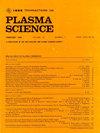Accelerated Plasma Spraying of Cu/Alumina Ceramics Based on Electromagnetic Pulse Welding: Simulation and Experiments
IF 1.3
4区 物理与天体物理
Q3 PHYSICS, FLUIDS & PLASMAS
引用次数: 0
Abstract
Cu is widely used to fabricate highly efficient conductive coatings in the power electronics industry due to its exceptional electrical and ductility. To achieve higher spraying speed and better Cu coating quality, this article deeply studied the method of accelerated plasma spraying (APS) based on electromagnetic pulse welding (EMPW). A multiphysical field simulation model was constructed to study the plasma and Cu powder motion processes. The electromagnetic parameters, temperature, and Cu powder velocity were obtained. The relationship between electrode parameters and the Lorentz force was obtained by combining the plasma equation of motion with numerical analysis. The velocity of the Cu powder motion was obtained through the capture of the spraying process. The findings revealed that the electrode spacing exerted an influence on the plasma motion. The simultaneous impact of the compression shock wave and the Lorentz force propelled the Cu powder, which remained in the solid state, toward the ceramic. The Cu powder speed reached 1024 m/s and the maximum Cu coating thickness of基于电磁脉冲焊接的Cu/氧化铝陶瓷加速等离子喷涂:仿真与实验
由于其优异的电性能和延展性,铜在电力电子工业中被广泛用于制造高效导电涂层。为了获得更高的喷涂速度和更好的镀层质量,本文深入研究了基于电磁脉冲焊接(EMPW)的加速等离子喷涂(APS)方法。建立了多物理场模拟模型,研究了等离子体和铜粉的运动过程。得到了电磁参数、温度和铜粉速度。将等离子体运动方程与数值分析相结合,得到了电极参数与洛伦兹力的关系。通过对喷涂过程的捕捉,得到了铜粉的运动速度。结果表明,电极间距对等离子体运动有影响。压缩激波和洛伦兹力的同时作用推动了保持固态的铜粉向陶瓷方向移动。放电电压为5 kV时,铜粉速度可达1024m /s,镀层厚度可达$140~ $ μ $ m。本研究阐明了基于EMPW的APS机理,为APS机理分析和未来应用提供了理论基础。
本文章由计算机程序翻译,如有差异,请以英文原文为准。
求助全文
约1分钟内获得全文
求助全文
来源期刊

IEEE Transactions on Plasma Science
物理-物理:流体与等离子体
CiteScore
3.00
自引率
20.00%
发文量
538
审稿时长
3.8 months
期刊介绍:
The scope covers all aspects of the theory and application of plasma science. It includes the following areas: magnetohydrodynamics; thermionics and plasma diodes; basic plasma phenomena; gaseous electronics; microwave/plasma interaction; electron, ion, and plasma sources; space plasmas; intense electron and ion beams; laser-plasma interactions; plasma diagnostics; plasma chemistry and processing; solid-state plasmas; plasma heating; plasma for controlled fusion research; high energy density plasmas; industrial/commercial applications of plasma physics; plasma waves and instabilities; and high power microwave and submillimeter wave generation.
 求助内容:
求助内容: 应助结果提醒方式:
应助结果提醒方式:


